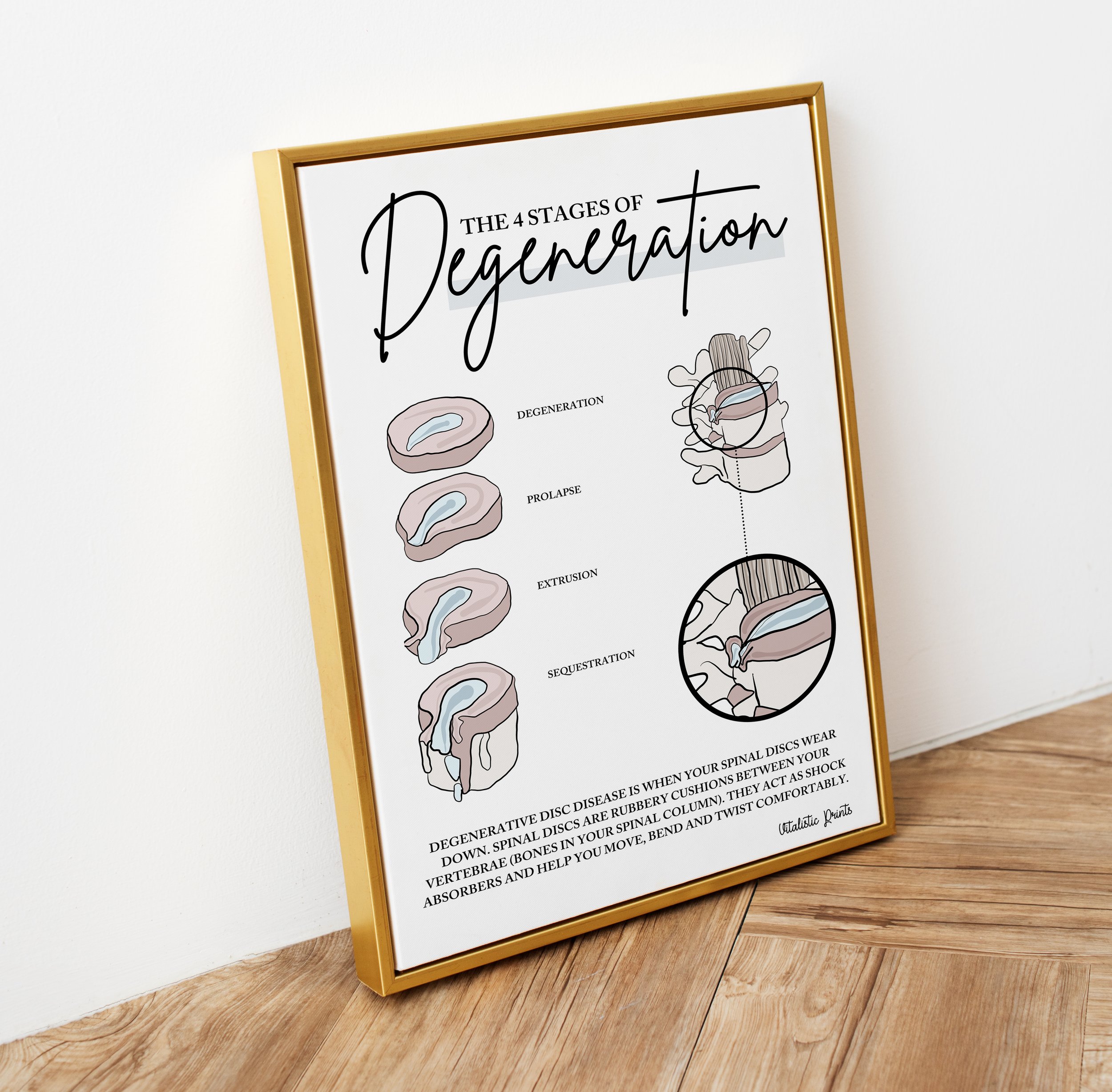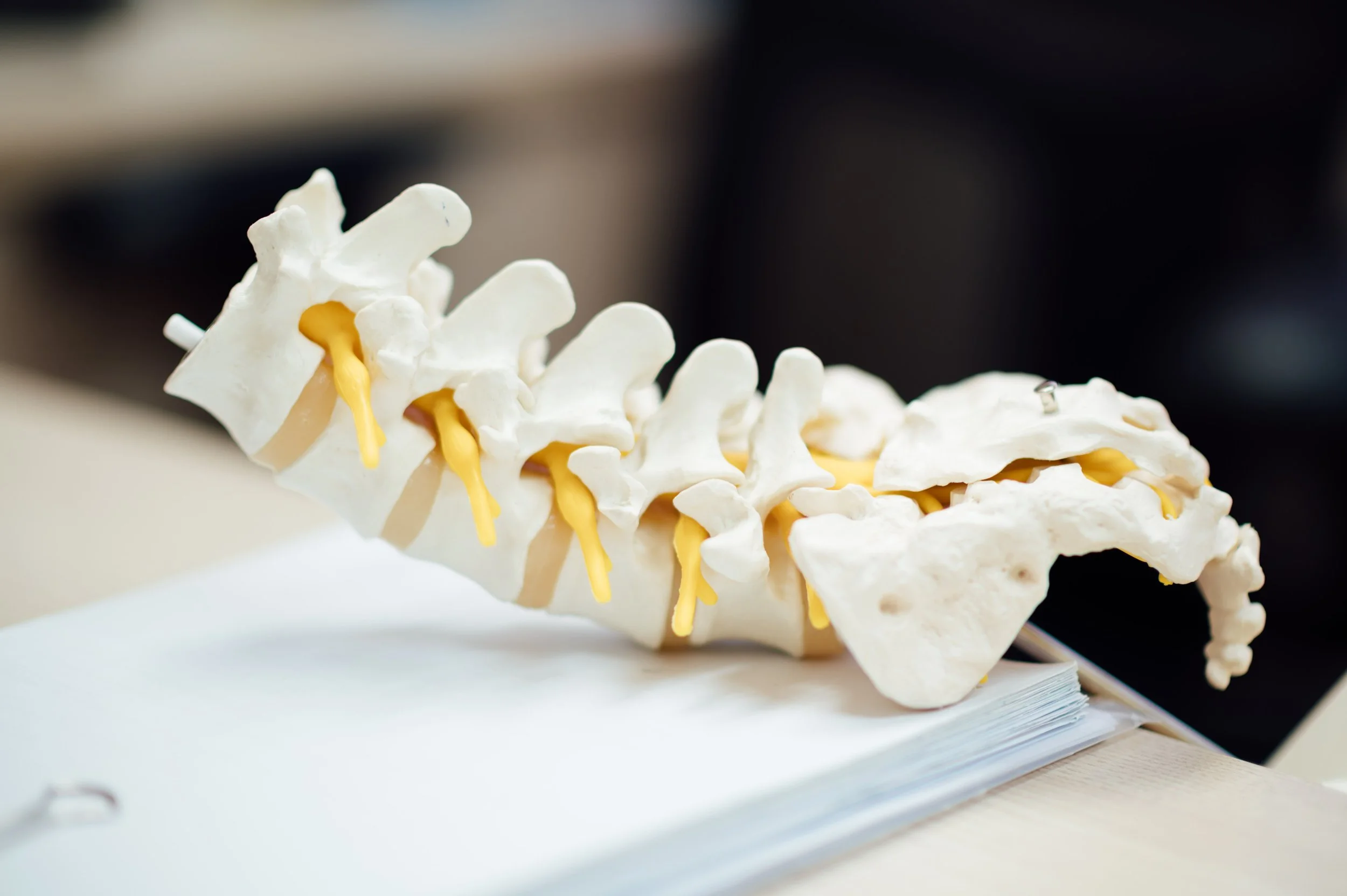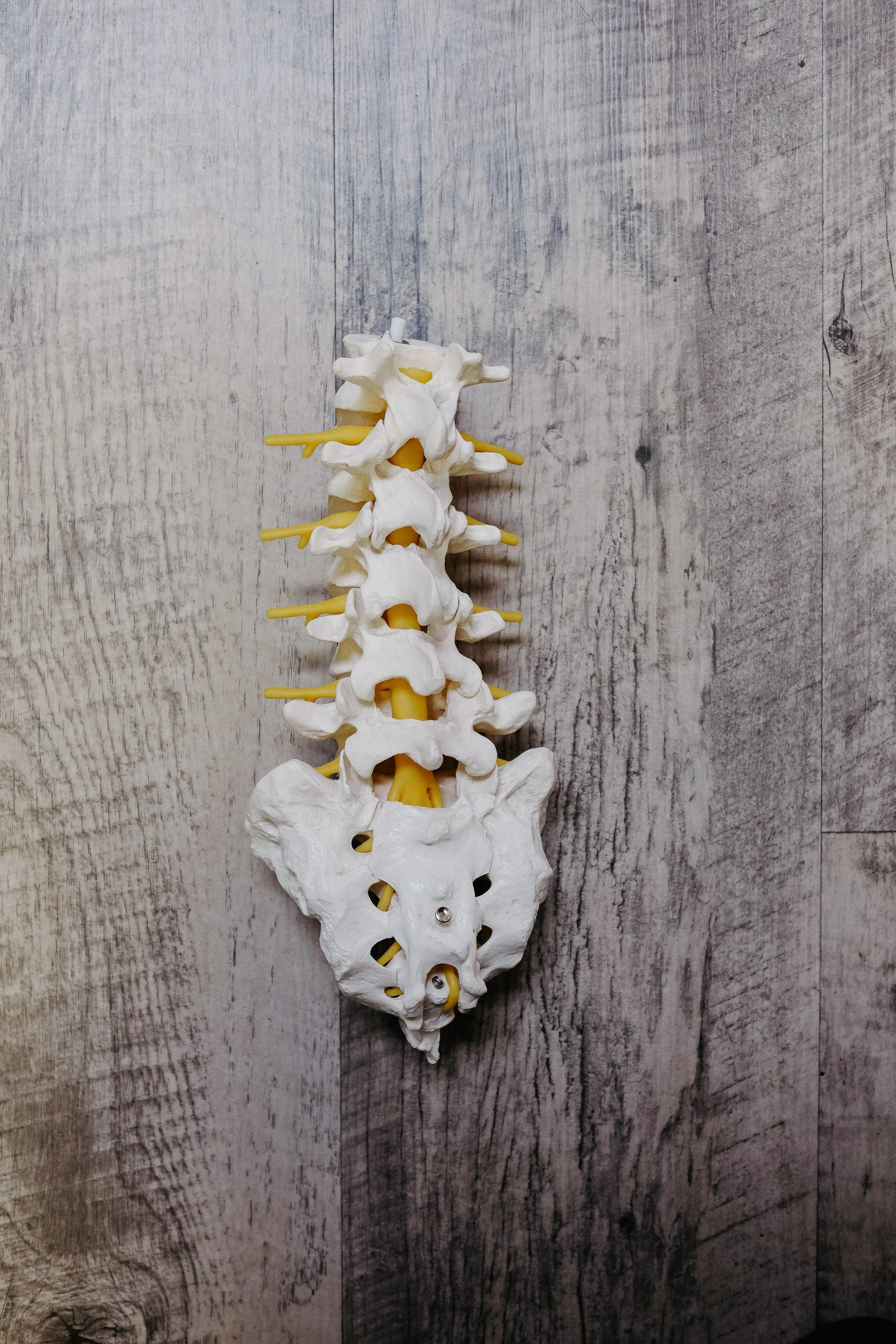Disc Herniations - What You Should Know
Spinal discs play a crucial role in the lower back, serving as shock absorbers between the vertebrae, supporting the upper body, and allowing a wide range of movement in all directions. A spinal disc has a soft, jellylike center (nucleus) encased in a tougher, rubbery exterior (annulus).
A herniated disc refers to a problem with one of the rubbery cushions (discs) that sit between the individual bones (vertebrae) that stack to make your spine. If a disc herniates and leaks some of its inner material, though, the disc can quickly go from easing daily life to aggravating a nerve, triggering back pain and possibly pain and nerve symptoms down the leg.
How Can A Disc Herniation Occur?
A disc herniation is most often the result of a gradual, aging-related wear and tear called disc degeneration. As you age, your discs become less flexible and more prone to tearing or rupturing with even a minor strain or twist.
Ongoing daily stress can contribute to acceleration of degeneration and also contribute to the cause of a disc herniation. Sitting for long periods at a desk, or repetitive movements due to work, heavy-lifting of objects.
Most people can't pinpoint the cause of their herniated disc. Sometimes, using your back muscles instead of your leg and thigh muscles to lift heavy objects can lead to a herniated disc, as can twisting and turning while lifting. Rarely, a traumatic event such as a fall or a blow to the back is the cause.
Risk Factors
Factors that can increase your risk of a herniated disc include:
Weight. Excess body weight causes extra stress on the discs in your lower back.
Occupation. People with physically demanding jobs have a greater risk of back problems. Repetitive lifting, pulling, pushing, bending sideways and twisting also can increase your risk of a herniated disc.
Genetics. Some people inherit a predisposition to developing a herniated disc.
Smoking. It's thought that smoking lessens the oxygen supply to the disc, causing it to break down more quickly.
What Are The Symptoms Of A Disc Herniation?
Most herniated discs occur in the lower back, although they can also occur in the neck. Signs and symptoms depend on where the disc is situated and whether the disc is pressing on a nerve. They usually affect one side of the body.
Arm or leg pain. If your herniated disc is in your lower back, you'll typically feel the most pain in your buttocks, thigh and calf. You might have pain in part of the foot, as well. If your herniated disc is in your neck, you'll typically feel the most pain in your shoulder and arm. This pain might shoot into your arm or leg when you cough, sneeze or move into certain positions. Pain is often described as sharp or burning.
Numbness or tingling. People who have a herniated disc often have radiating numbness or tingling in the body part served by the affected nerves.
Weakness. Muscles served by the affected nerves tend to weaken. This can cause you to stumble, or affect your ability to lift or hold items.
You can have a herniated disc without symptoms. You might not know you have it unless it shows up on a spinal image.
Prevention
To help prevent a herniated disc, do the following:
Exercise. Strengthening the trunk muscles stabilizes and supports the spine.
Maintain good posture. This reduces pressure on your spine and discs. Keep your back straight and aligned, particularly when sitting for long periods. Lift heavy objects properly, making your legs — not your back — do most of the work.
Maintain a healthy weight. Excess weight puts more pressure on the spine and discs, making them more susceptible to herniation.
Quit smoking. Avoid the use of any tobacco products.
Complications?
Just above your waist, your spinal cord ends. What continues through the spinal canal is a group of long nerve roots that resemble a horse's tail (cauda equina).
Rarely, disc herniation can compress the entire spinal canal, including all the nerves of the cauda equina. Rarely, emergency surgery might be required to avoid permanent weakness or paralysis.
Worsening symptoms. Pain, numbness or weakness can increase to the point that they hamper your daily activities.
Bladder or bowel dysfunction. Cauda equina syndrome can cause incontinence or difficulty urinating even with a full bladder.
Saddle anesthesia. This progressive loss of sensation affects the areas that would touch a saddle — the inner thighs, back of legs and the area around the rectum.
At WYLD Chiropractic we provide you with a personalised care plan which is your own road map to your ideal health destination. What if reaching “pain free” is only the first stop along the route to ideal health. What we know as chiropractors, is pain is a symptom of often a much greater picture.
Pain is incredibly motivating and is often what takes us to the Chiropractor in the first place, but if our final destination is only “pain free palm springs”, we often miss out on “optimal health oasis.” We want you to experience all Chiropractic has to offer, beyond pain relief. So remember, your brain is changing one adjustment at a time. “Life is not a single event; it is an ongoing dynamic process” 4 . Getting your spine and nervous system checked consistently by a chiropractor helps you adapt to an ever changing life. Your body is full of potential, let’s see how far you can go!
What To Expect At Your First Chiropractic Visit
An initial Chiropractic exam for back pain will typically have three parts: a consultation, case history, and physical examination. Laboratory analysis and X-ray examination may be performed.
Consultation. The patient meets with the chiropractor and provides a brief synopsis of his or her lower back pain, such as:
Duration and frequency of symptoms
Description of the symptoms (e.g. burning, throbbing)
Areas of pain
What makes the pain feel better (e.g. sitting, stretching)
What makes the pain feel worse (e.g. standing, lifting).
Case history. The chiropractor identifies the area(s) of complaint and the nature of the back pain by asking questions and learning more about different areas of the patient's history, including:
Family history
Dietary habits
Past history of other treatments (chiropractic, osteopathic, medical and other)
Occupational history
Psychosocial history
Other areas to probe, often based on responses to above questions
Physical examination. A chiropractor may utilize a variety of methods to determine the spinal segments that require chiropractic treatments, including but not limited to static and motion palpation techniques determining spinal segments that are hypo mobile (restricted in their movement) or fixated. Depending on the results of the above examination, a chiropractor may use additional diagnostic tests, such as:
X-ray to locate subluxations (the altered position of the vertebra)
A device that detects the temperature of the skin in the paraspinal region to identify spinal areas with a significant temperature variance that requires manipulation.
Chiropractors are trained in a variety of methods to assess the underlying cause of the problem, including:
Evaluation and management services. Chiropractors are trained in examining the joints, bones, muscles and tendons of the spine, head, extremities and other areas of the body with the purpose of noting any misalignment, tenderness, asymmetry, defects or other problems.
Neurologic and other common physical examination procedures. Chiropractors are trained to perform a variety of neurologic tests (nerve root compression/tension, motor strength, coordination, deep tendon and pathological reflexes, etc.) and are skilled in performing orthopedic, cardiovascular and many other common examinations.
Specialised assessment. Chiropractors are trained to assess range of motion, stability, muscle strength, muscle tone and other assessments with the lower back.
Common diagnostic studies. Chiropractors are trained in use of diagnostic studies and tools such as radiography (X-rays), laboratory diagnostics and neurodiagnostics.
References
1. Changes in H-reflex and V-waves following spinal manipulation
https://link.springer.com/article/10.1007%2Fs00221-014-4193-5
2. The role of spinal manipulation in addressing disordered sensorimotor integration and altered motor control
https://www.sciencedirect.com/science/article/abs/pii/S1050641112000430?via%3Dihub
3. How often should you see your chiropractor
https://therealitycheck.com/wp-content/uploads/2020/12/How-Often-Should-You-See-a-Chiropractor.pdf
4. At the meeting point between anticipation and chiropraxis
5. Effects of an adjustment
https://therealitycheck.com/wp-content/uploads/2014/01/PublicArticle-EoA.pdf
6. https://www.spineuniverse.com/conditions/neck-pain/chiropractic-care-neck-pain
7. https://www.acatoday.org/patients/health-wellness-information/neck-pain-and-chiropractic
8. https://www.health.govt.nz/your-health/conditions-and-treatments/diseases-and-illnesses/neck-pain
9. https://www.mayoclinic.org/diseases-conditions/neck-pain/symptoms-causes/syc-20375581
10. https://www.spine-health.com/treatment/chiropractic/what-a-chiropractor
11. https://my.clevelandclinic.org/health/treatments/21033-chiropractic-adjustment
12. https://chiropractic-uk.co.uk/neck-pain/
13. https://chiropractic.ca/blog/neck-pain-3-ways-chiropractic-care-can-help/
14. https://www.ncbi.nlm.nih.gov/pmc/articles/PMC2786244/
15. https://chiromt.biomedcentral.com/articles/10.1186/s12998-019-0288-1
16. https://www.spine-health.com/conditions/herniated-disc/lumbar-herniated-disc
17. https://www.mayoclinic.org/diseases-conditions/herniated-disk/symptoms-causes/syc-20354095
19. https://www.nationalspinecare.com/is-chiropractic-treatment-risky-for-herniated-discs-and-sciatica/
20. https://pubmed.ncbi.nlm.nih.gov/29038870/
21. https://chiromt.biomedcentral.com/articles/10.1186/s12998-018-0185-z
22. https://www.ncbi.nlm.nih.gov/pmc/articles/PMC2647024/
23. https://clinicaltrials.gov/ct2/show/NCT04305509
24. https://www.sciencedirect.com/science/article/abs/pii/S1746068906000964







